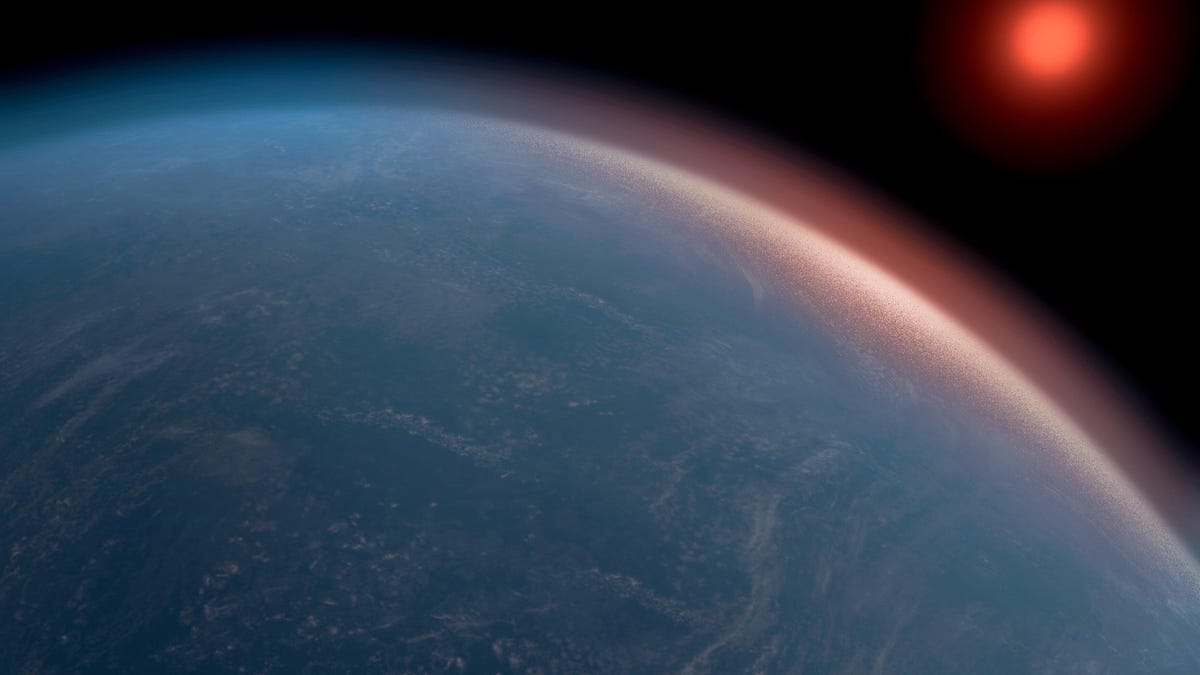Large alien world with water vapor might still host life after all
The awkwardly named K2-18b may look like Neptune, but it could be hiding a giant, habitable Earth-like planet beneath its atmosphere.

An illustration of K2-18B.
Last year, astronomers announced they'd spotted water vapor in the atmosphere of an exoplanet named K2-18b with temperatures conducive to life. But the large size of the planet made it uncertain whether it could truly be hospitable. Now, new research suggests this oversized world and others like it might be lively after all.
K2-18b orbits a dwarf star 124 light-years away and is estimated to be larger than Earth (8.6 times our planet's mass, to be exact), but smaller than Neptune. It's been thought that larger planets tend to be gas giants, with atmospheric pressures that aren't exactly hospitable.
Researchers from the University of Cambridge fed the latest mass, radius, and atmospheric data of the planet into different models and conclude that it's very possible K2-18b is more like Earth than Neptune.
"Water vapor has been detected in the atmospheres of a number of exoplanets but, even if the planet is in the habitable zone, that doesn't necessarily mean there are habitable conditions on the surface," explained research lead Nikku Madhusudhan, in a release. "To establish the prospects for habitability, it is important to obtain a unified understanding of the interior and atmospheric conditions on the planet -- in particular, whether liquid water can exist beneath the atmosphere."
Beyond having the right temperatures, a world also needs an atmosphere with the right pressures to maintain life. A rocky interior for water to pool on is awful helpful, too.
While K2-18b's hydrogen and helium atmosphere makes it quite different from ours, that doesn't mean it can't be habitable. The team found a number of scenarios that could account for all the available data on the planet, including a rocky world like Earth, a mini-Neptune and a world completely covered by water.
The team's findings were published Wednesday in The Astrophysical Journal Letters.
"We find that K2-18b has a realistic chance of being habitable," the paper reads, and goes even further. "We argue that planets such as K2-18b can indeed have the potential to approach habitable conditions and searches for biosignatures (signs of life like methane or oxygen) should not necessarily be restricted to smaller rocky planets."
For now, though, exactly what -- or who -- is on the surface of K2-18b will remain guesswork. Astronomers are hopeful the launch of the upcoming James Webb Space Telescope will allow them, and all of us, to get a closer look.

